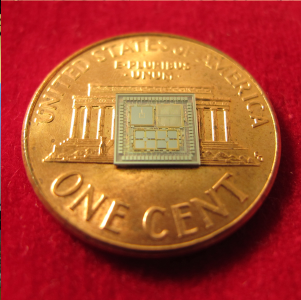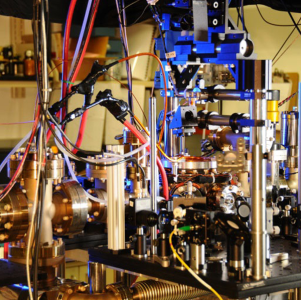
This micro-ANS chip is one of five inventions DARPA is working on to help improve or replace GPS
GPS has become such an integral part of modern technology, it is hard to imagine how most of it would work if this revolutionary technology wasn’t around. It seems like everything has GPS chips nowadays: cars, boats, trains, planes, phones and watches to name a few.
But all technology has limitations, and GPS is no exception. Signals cannot be received underground, underwater or inside buildings. The signals are significantly degraded during solar storms and are susceptible to jamming and spoofing, making GPS navigation a little dangerous for military purposes.
To address this, DARPA has been researching new ways to provide real-time positioning, navigation and timing (PNT) information to replace GPS. A lot of these innovations are super technical and still in the experimental phase, but they seem pretty cool.
DARPA’s current PNT portfolio includes five programs, focused wholly or in part on PNT-related technology:
 1. Adaptable Navigation Systems (ANS) – This system involves using cold-atom interferometry, which is measuring the relative acceleration and rotation of a cloud of atoms to create accurate measurements to track where you are without having to rely on outside data to determine time and position. Additionally, ANS will use non-navigational electromagnetic signals–such as commercial satellite, radio and television signals and even lightning strikes–when they are available to provide additional points of reference for PNT readings. The result of these two methods might create stronger signals than GPS and provide PNT information with or without the current GPS system.
1. Adaptable Navigation Systems (ANS) – This system involves using cold-atom interferometry, which is measuring the relative acceleration and rotation of a cloud of atoms to create accurate measurements to track where you are without having to rely on outside data to determine time and position. Additionally, ANS will use non-navigational electromagnetic signals–such as commercial satellite, radio and television signals and even lightning strikes–when they are available to provide additional points of reference for PNT readings. The result of these two methods might create stronger signals than GPS and provide PNT information with or without the current GPS system.
2. Microtechnology for Positioning, Navigation and Timing (Micro-PNT) – This involves micro-electromechanical systems (MEMS) and other miniaturized versions of current technology. DARPA researchers have fabricated a prototype with three gyroscopes, three accelerometers and a highly accurate master clock on a chip that fits easily on the face of a penny. The self-calibrating, high-performance and cost-effective microscale sensors could offer tremendous improvements over existing sensors, making PNT readings more reliable.
3. Quantum-Assisted Sensing and Readout (QuASAR) – Atomic clocks are used to help calculate location with GPS signals. QuASAR researchers have developed optical atomic clocks laboratories with a timing error of less than 1 second in 5 billion years. This kind of accuracy will greatly improve GPS or any other PNT system we use.
 4. Program in Ultrafast Laser Science and Engineering (PULSE) – Using pulsed laser technology, researchers have improved the precision and size of atomic clocks and microwave sources, making time synchronization over long distances possible. PULSE technology could enable the global distribution of time with virtually no error and would greatly increase PNT capabilities without needing constant time correction calculations.
4. Program in Ultrafast Laser Science and Engineering (PULSE) – Using pulsed laser technology, researchers have improved the precision and size of atomic clocks and microwave sources, making time synchronization over long distances possible. PULSE technology could enable the global distribution of time with virtually no error and would greatly increase PNT capabilities without needing constant time correction calculations.
5. Spatial, Temporal and Orientation Information in Contested Envrionments (STOIC) – This program is attempting to develop PNT systems that provide GPS-independent PNT with GPS-level timing in a contested environment. STOIC comprises three primary elements: long-range robust reference signals, ultra-stable tactical clocks, and multifunctional systems that provide PNT information between multiples users.
While all of these technologies are currently still in the development, testing or research phases, it is strange to think that such a pervasive technology like GPS will become completely obsolete. It isn’t going to happen anytime soon, but it is definitely coming.
Who knows, our children or grandchildren will probably look at our current GPS system and laugh that we were able to put up with such slow, unreliable and touchy technology for so many things, much the way we look at cell phones in the 80s and laugh at their size.
